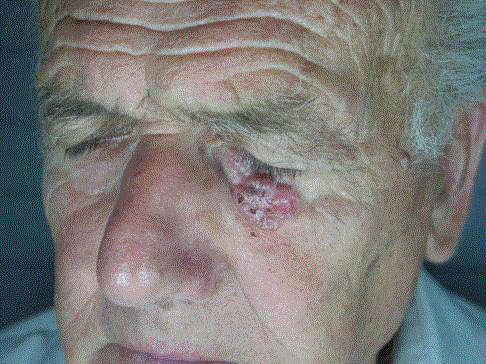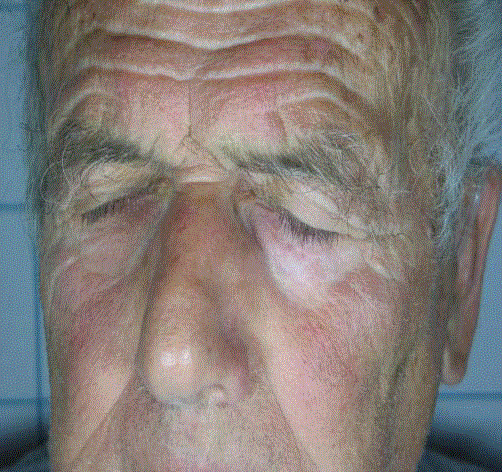Clinical Image
Combined Pulse Dye Laser with UltraPulse CO2 Laser for the Treatment of a Nodular Basal Cells Carcinoma of the Lower Eyelid
Bonciani D*, Morini C and Cannarozzo G
Department of Medical and Surgical Clinical Care, University of Rome Tor Vergata, Rome, Italy
*Corresponding author: Diletta Bonciani, Department of Medical and Surgical Clinical Care, University of Rome Tor Vergata , Rome, Italy
Published: 04 Oct, 2018
Cite this article as: Bonciani D, Morini C, Cannarozzo
G. Combined Pulse Dye Laser with
UltraPulse CO2 Laser for the Treatment
of a Nodular Basal Cells Carcinoma of
the Lower Eyelid. Clin Surg. 2018; 3:
2137.
Clinical Image
We present the case of a 85 year-old male with a left lower eyelid nodule, that initially started
as an erythematous papule, but had increased to greater than 2,5 cm in the past 5 years and had
histologically diagnosed as basal cells carcinoma.
Due to the old age of the patient and the critical site we decided to treat it with a combined
595 nm Pulse Dye laser (PDL, Synchro VasQ, DEKA Mela) and UltraPulse CO2 laser (SmartXide2,
DEKA Mela).
We scheduled 3 sessions with an interval of 60 days from each other: we treated it twice with
PDL (spot size =12 mm, fluence =7.5 J/cm2, pulse duration =0.5 ms, 10% overlap, three passes,
and cooling), at third session with CO2 laser (Power =0.5 W to 2.5 W) and, immediately after,
intralesional PDL.
There were no complication after treatment and at the 6, 12 and 24 month follow up all area
were well healed with no evidence of recurrence. Figure 1 and 2: 1) Nodular basal cell carcinoma of
the lower eyelid before treatment, 2) 24 months after treatment.


